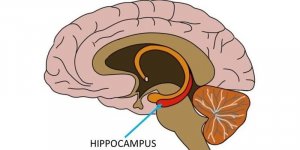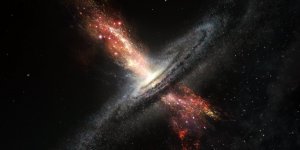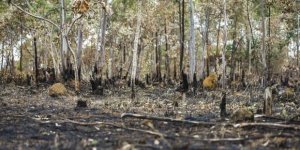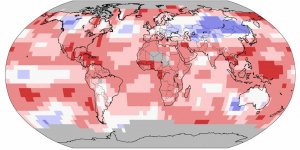Science News

New research reveals that short-term memories and long-term memories are formed simultaneously in different parts of the brain, a discovery that challenges our current models of memory formation. »

New research on solar storms finds that they not only can cause regions of excessive electrical charge in the upper atmosphere above Earth's poles, they also can do the exact opposite: cause regions that are nearly depleted of electrically charged particles. »

A relatively large near-Earth asteroid discovered nearly three years ago will fly safely past Earth on April 19 at a distance of about 1.1 million miles (1.8 million kilometers), or about 4.6 times the distance from Earth to the moon. »

The gentle burbling of a brook, or the sound of the wind in the trees can physically change our mind and bodily systems, helping us to relax. New research at Brighton and Sussex Medical School explains how, for the first time. »

Researchers at Belgium’s Ghent University have developed a process that turns grass into biofuel. »

Since the discovery in 2009 that brown fat can be active in adult humans, researchers around the world have worked to unveil ways to switch on this fat. Scientists at Joslin Diabetes Center have now identified a new route to throw the switch. »

To build a sandcastle here on Earth, the sand needs to be wet so it can stick together. Not so on Saturn’s strange and largest moon Titan, according to a new study. »

Observations using ESO’s Very Large Telescope have revealed stars forming within powerful outflows of material blasted out from supermassive black holes at the cores of galaxies. »

An international study spearheaded by Brazilian scientists forecasts the continuation of the deforestation in the Brazilian savanna, known as cerrado. »

A new study suggests that taking a B vitamin supplement may protect against certain epigenetic effects associated with air pollution. »

In an effort to find better depression treatments, researchers at University of California San Diego School of Medicine discovered that inhibiting an enzyme called Glyoxalase 1 relieves signs of depression in mice. »

Big, small, broad or narrow, humans inherit their nose shape from their parents, but ultimately, the shape of someone's nose and that of their parents was formed by a long process of adaptation to our local climate. »

A discovery of well-preserved fossil plants by paleontologists from the United States, China, Japan, Russia and Mongolia has allowed researchers to identify a distant relative of the living plant Ginkgo biloba. »

The light collected from TRAPPIST-1, an ultra-cool dwarf star approximately 40 light-years from Earth, is at the center of the image. Not directly visible, are the seven Earth-size planets that orbit TRAPPIST-1. »

Astronomers have used ALMA to detect a huge mass of glowing stardust in a galaxy seen when the Universe was only four percent of its present age. »

Scientists from the Universities of California and North Carolina, with several other universities in the United States and Canada, report a strong correlation between abnormal distribution of cerebrospinal fluid in infants and later development of autistic symptoms. »

A research project conducted by the Agroenergy division of the Brazilian Agricultural Research Corporation has identified species of microalgae that can be grown in liquid waste from agroindustrial processes to provide renewable raw materials. »

The combination of prolonged hot spells with poor air quality greatly compounds the negative effects of each and can pose a major risk to human health, according to new research. »

A genetic “mutational meltdown” helped push the woolly mammoth toward extinction, according to a new study. »

There's a new record holder for brightest pulsar ever found -- and astronomers are still trying to figure out how it can shine so brightly. »

People diagnosed with attention deficit hyperactivity disorder have smaller brain volume than those without the disorder. »

NASA's Dawn mission has found evidence for organic material on Ceres, a dwarf planet and the largest body in the main asteroid belt between Mars and Jupiter. »

A scientist who found fame recovering a meteorite that crashed into Russia in 2013 has found 13 kilograms of meteorite-like material in Iran’s Lut desert. »

For decades, astronomers have tracked black holes with masses millions of times that of the sun, as well as those with tens of solar masses. »

Scientists from the Stanford University School of Medicine announced the invention of a new diagnostic tool that can sort cells by type: a tiny printable chip that can be manufactured using standard inkjet printers for possibly about one U.S. cent each. »

Malaria-carrying mosquitoes are becoming resistant to the insecticide used in bed nets to prevent the disease. Researchers say it is important to stay ahead of the resistance to avoid what they are calling a public health catastrophe. »

Soccer players who head the ball a lot are three times more likely to have concussion symptoms than players who don't head the ball often, according to a new study. »

It is almost impossible to eradicate Aedes aegypti mosquitoes, the vector for dengue, zika, chikungunya, and yellow fever, said the chair of Fundação Oswaldo Cruz (FIOCRUZ), Dr. Nísia Trindade. »

Scientists at the University of Florida Institute of Food and Agricultural Sciences and their partners have found a way to get tomatoes to produce the compounds that make them more flavorful. »

For the first time, chemists at the University of Illinois at Chicago have used a path-breaking optical imaging technique to pinpoint cholesterol's location and movement within the cell membrane. »

Between 1985 and 2015, 219,735 hectares (2,197 km2) of the Atlantic Forest remnants went through a process of regeneration in nine of the 17 Brazilian states that have the forest. »

Scientists from Yale University report they managed to trigger instinctive hunting behavior in mice using optogenetics, a manner of priming cells within an organism's brain to switch on when exposed to a laser. »

Researchers at the National Institutes of Health found that the blood protein tau could be an important new clinical biomarker to better identify athletes who need more recovery time before safely returning to play after a sports-related concussion. »

Children of obese parents may be at risk for developmental delays, according to a study by researchers at the National Institutes of Health. »

Private space exploration company SpaceX has conducted its first successful launch since the explosion of a rocket on the launchpad in September. »

The Amazon lost 7,989 square kilometres of rainforest between August 2015 and July 2016, according to a survey published by the Amazon Environmental Research Institute based on late 2016 government data. »

There could be some dramatic changes to the night sky if astronomers are correct in their observations. »

Monster black holes sometimes lurk behind gas and dust, hiding from the gaze of most telescopes. But they give themselves away when material they feed on emits high-energy X-rays that NASA's NuSTAR mission can detect. »

A joint research team from the University of Calgary, American Museum of Natural History, and Florida State University announced that the eggs of non-avian dinosaurs such as the duck-billed dinosaur took as long as six months to hatch, far longer than had previously been believed. »

Researchers identified a new insecticide for mosquitoes that inhibits a potassium channel to block kidney function. »

According to a study published on Monday in the Proceedings of the National Academy of Sciences, the cheetah (Acinonyx jubatus), is down to 7,100 individuals remaining worldwide, most of them in Africa and, rarely, in Asia. »

Researchers restored recently “set aside” memories by magnetically stimulating the unique patterns of brain activity that were originally provoked. »

At first glance, Ceres, the largest body in the main asteroid belt, may not look icy. Images from NASA's Dawn spacecraft have revealed a dark, heavily cratered world whose brightest area is made of highly reflective salts -- not ice. »

A sensor array off the Pacific Northwest coast has captured the cracking, bulging and shaking from the eruption of Axial Seamount, a nearly mile-high undersea volcano, in more detail than ever before. »

A satellite developed by junior high school children from Ubatuba, São Paulo state, was launched to the International Space Station (ISS) from Tanegashima Space Center, Japan, on Friday (Dec. 9). »

The next time you’re hungry for a snack, you may want to grab a handful of nuts, as new research suggests they lower the risk of heart disease, cancer and other diseases. »

The present-day thinning and retreat of Pine Island Glacier, one of the largest and fastest shrinking glaciers of the West Antarctic Ice Sheet, may have already been underway as early as the 1940s, according to findings from an international research team led by the British Antarctic Survey. »

GOES-R, the first of NOAA’s highly advanced geostationary weather satellites, lifted off from Cape Canaveral, Florida, at 6:42 p.m. on November 19. »

Babies whose mothers were infected with the Zika virus during pregnancy will be monitored for up to 3 years, even if they have not reported any symptom at birth. »

In October, La Niña’s presence started to be felt, as global temperatures cooled from the record warm conditions experienced earlier in the year. »